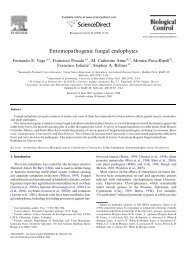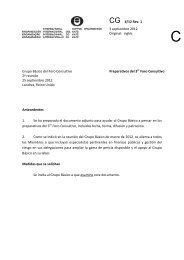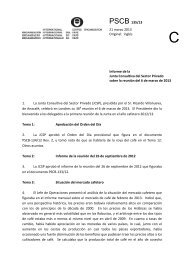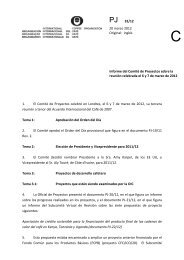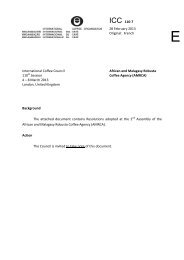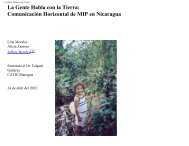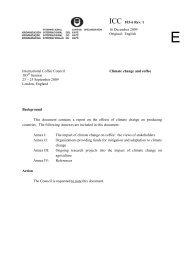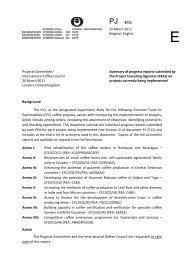Devouring profit - International Coffee Organization
Devouring profit - International Coffee Organization
Devouring profit - International Coffee Organization
Create successful ePaper yourself
Turn your PDF publications into a flip-book with our unique Google optimized e-Paper software.
88<br />
Ecuadorian coffee growers<br />
Main characteristics: coffee farmers number about 150,000 in Ecuador. According to<br />
a survey carried out in this project, 95% of those questioned were men and only 5%<br />
women owner-occupiers. The majority (56%) were more than 50 years old, whilst just<br />
7% were less than 30 years old. 88% of them had only primary education, 9% secondary<br />
and only 2% tertiary education. These figures suggest that functional illiteracy may<br />
well be high amongst Ecuadorian farmers, which is a disadvantage since it is well<br />
known that increasing educational levels correlate well with improvement in farm<br />
management. This is especially the case for an IPM strategy where measurements<br />
have to be taken and recorded, and a decision made after careful analysis.<br />
On a more positive note, farmers’ experience of coffee must be considerable, since<br />
68% of them have been growing coffee for more than 10 years, with just 13% having<br />
less than 5 years experience. And regarding family size, 60% have more than 5 members,<br />
which should mean that availability of family labour is good. Some farmers mentioned<br />
that in recent months (in 2000) there had been a significant migration of rural<br />
labour, especially to Spain. They suspect that if this trend continues, they will face a<br />
lack of this resource in future. Despite family size, the level of contracted labour is<br />
high, with 41% of farms employing labour, 33% using both contracted and family<br />
labour with just 25% having sufficient family labour to carry out all coffee-related<br />
activities.<br />
During our meetings, cattle, cocoa and banana/plantain frequently appeared as more<br />
important to farmers. The extremely low prices that many of them get for their poorly<br />
processed coffee probably contributes to this position. It was clear that in most cases<br />
their income is diversified and this kind of scheme plays a very important role in their<br />
livelihood. More research is needed to understand how they view coffee and how<br />
they rank it in importance as part of their livelihoods; we suspect many of them see it<br />
as a cash earner which provides the occasional bonus payment when prices rise.<br />
Rural wages: the daily wage for a farm worker ranged between US $1 and $2 in the<br />
period 2000-01. The lower amount is paid for carrying out activities such as weed<br />
control, applying fertiliser etc., while the latter is common during the harvest season.<br />
This labour cost is cheap compared to other countries, especially Colombia. If this<br />
state of affairs continues, Ecuador would have a competitive advantage in traditional<br />
shade and organic coffees but would need to improve quality considerably to benefit<br />
from this trade sector.<br />
Honduran coffee growers<br />
Main characteristics: according to La Central (2001) there are 109,000 coffee farmers<br />
in Honduras. From the project survey, farmers’ average age is 43 years old. 42% are<br />
21 to 40 years old, 38% between 40 and 50 and 20% are over 50 years old. But this<br />
means that 80% are relatively young (50 years old or less) so this could be seen as an




